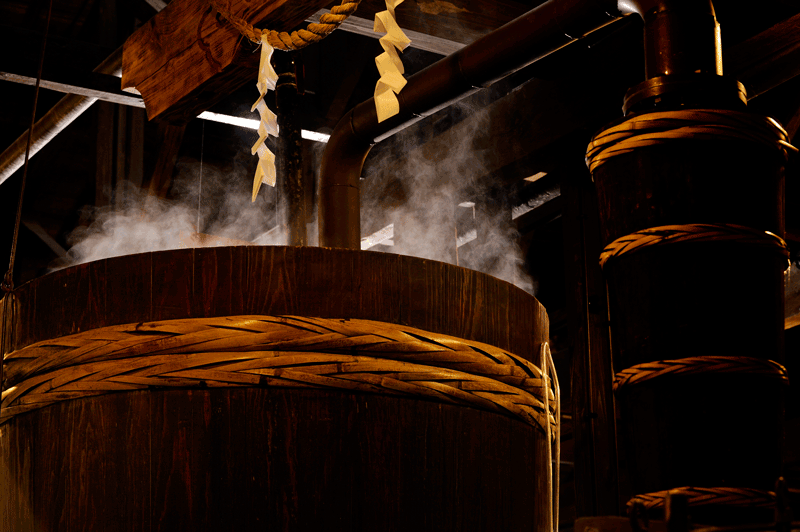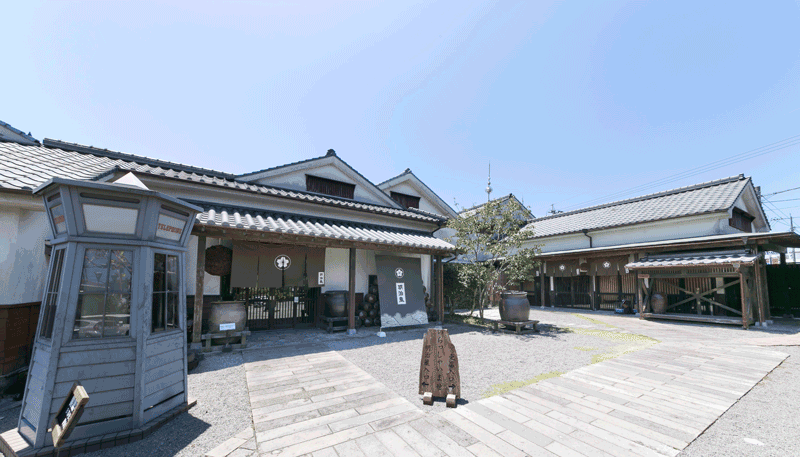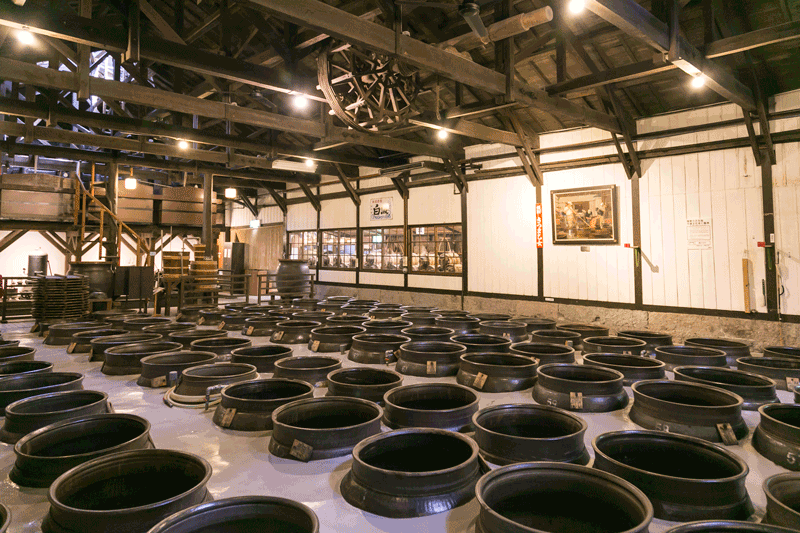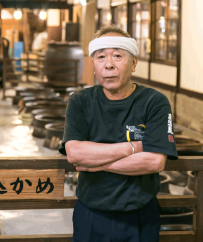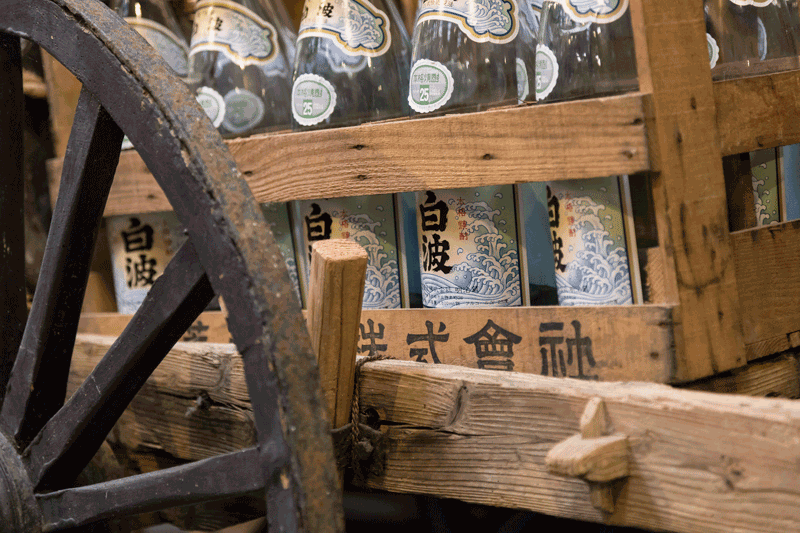Satsuma Shuzo is a place where shochu quality is distilled and generations of artisanal craftsmanship can be tasted in every drop.
The business of shochu may be booming, but what few people outside of Kagoshima know is that the beverage is not widely produced by brand-name companies and large corporations. Most distilleries and labels are, on the contrary, handled by small family-run companies. One such company is Satsuma Shuzo, established in 1936 by the Hombo family.
The earliest record of shochu being manufactured and served to customers dates back about 500 years earlier, when a Portuguese traveler who had docked in Kagoshima recorded a note about drinking the spirit in his diary. After centuries of refinement and government recognition, “Satsuma shochu” today retains a quality that can be compared with Bordeaux wine or Scotch whiskey, as one of the tour guides at Satsuma Shuzo’s Meijigura Museum in Makurazaki City explains.
Shochu can be made from a variety of different crops, the most common being rice; barley; soba, or buckwheat; and imo, or sweet potato. The most popular variety produced in Kagoshima is imo jochu—sweet potato shochu. The warm, humid climate of southern Japan allows farmers to maximize on crops and grow sweet potatoes yearly, yielding larger quantities from their rich lands than northern farmers could.
Satsuma Shuzo has three main distilleries that draw resources from various farms nearby. The key to good shochu is relying on fresh produce—never freezing, never drying. Satsuma Shuzo specializes in Honkaku Shochu, meaning “authentic” or “single distillation” (Korui shochu is the term for multiple distillations).
Sweet potatoes in Kagoshima are usually planted in February, and grow rapidly from March. Crops are usually harvested between August and November. The favored type of sweet potato is called Kogane Sengan, and is chosen for the flavor of the shochu that it yields.
Once all of the potatoes have been picked, they are selected carefully and washed. Afterwards, the potatoes are boiled and steamed, just before being cooled and then crushed by one of the processing machines.
At about the same time, another group at the brewery has been hard at work making koji, the “starter” material needed to make shochu. Steamed, then cooled rice is sprinkled with a bacteria that is called koji-kin. It takes roughly two days for the koji to grow on the rice, and maintaining just the right temperature is crucial for cultivating suitable koji. The shochu master brewer, or touji, must stay at the brewery the entire time in order to ensure that the koji grows properly.
After the koji has been produced, it is mixed with yeast and water, which ferments for six to eight days. The product of this stage is a mash called moromi. The crushed sweet potatoes are mixed with the moromi, and the mixture is allowed to ferment for eight to 10 days. This secondary moromi is then moved along to the distillation process.
As Maeno Shoichi, Satsuma Shuzo’s touji explains, there are three separate barrels for the distillation process itself. First, there is the earthen floor barrel. “It’s about 600 liters in size, and it’s in the floor because somebody needs to stir it by hand with a giant spoon. Luckily, I’ve never fallen in.”
There is an even larger barrel positioned next to it, above ground, and has a ladder beside it. “The next barrel it’s transferred to”—and now, more water is being added to liquefy it further—“holds about 1000 liters. We use the ladder so we can climb up and check on it manually. We still have to do that; no robot knows when it’s ready.”
Finally, it’s stored in a cooling container—a heavy vase-shaped barrel with a large lid on it. It can be stored up to any number of days, again, depending on the client and the flavor goal in mind. The entire process typically lasts 18 days. Pure, straight shochu, known as genshu, is bottled directly after maturation and filtration, and has an alcohol content of 37%. Other varieties of shochu are produced by mixing with water. It is a combination of art and science that has been perfected over the past eight decades at Satsuma Shuzo.
The Meijigura Museum offers an intimate look at the past and present in shochu distilling. It feels like a barn: it is shrouded in darkness to shield the shochu, and the cold air keeps temperatures controlled. The rustic ambience takes you back in time. Even when no shochu is being made, its smell still lingers in the air. There is a lookout tower at the top where visitors can spy Kagoshima landmarks—even as far as Yakushima island—while sampling some shochu. Downstairs is a gift shop, where you can watch the commercial that a particularly famous anime studio made personally for one of Satsuma Shuzo’s brand bottles. Across the street is a small sweet potato beer garden where you can feast on local food and keep your spirits high.
Satsuma Shuzo’s website offers much more information on history and types of shochu: www.satsuma.co.jp/english
Sponsored Post
Updated On July 19, 2017

